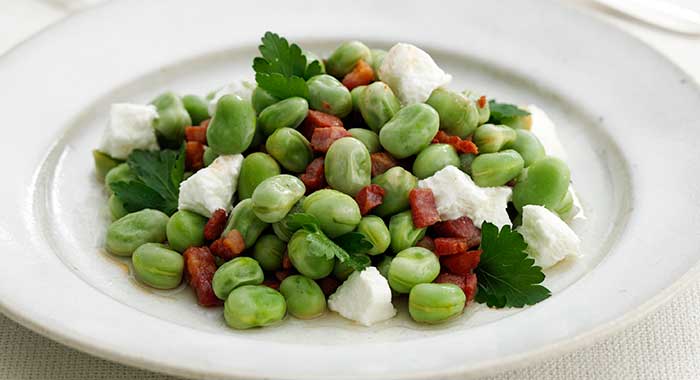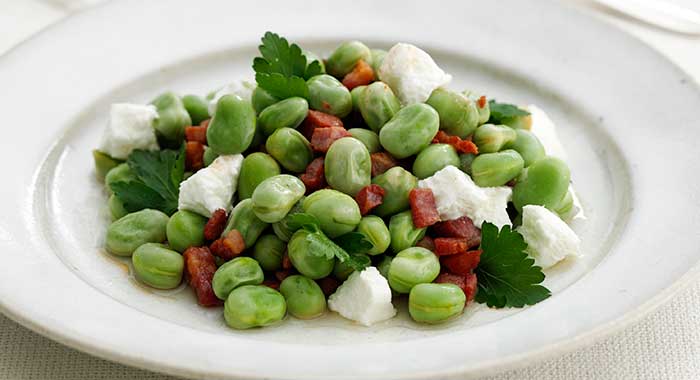
Pronounce it: braw-d be-en
A member of the legume family, broad beans are pretty hardy and adaptable – they grow in most soils and climates. They’re a great source of protein and carbohydrates, as well as vitamins A, B1 and B2. In the US, they’re known as fava beans.
Availability
At their peak from the end of June to mid September. Broad beans are easy to grow in a veg patch or allotment.
Choose the best
Buy broad beans as fresh as possible; pods should be firm and crisp. Avoid any that feel soft, with pockets of air inside.
Prepare it
Broad beans should be podded, unless they are very young and tender. Put the beans in a pan, cover with boiling water, return to the boil and cook for 3-5 minutes. Then drain, empty into cold water, slit each pod along its seam and run your thumb along the furry inside to push the beans out.
To double pod – or remove the thin skin that covers each individual bean – use your nail to slit the skin, then pop out the bright green bean.
Store it
Keep in a perforated bag in the fridge for up to five days.
Cook it
Pod, purée and serve with a little fried garlic; parboil podded broad beans and peas, add some fried onion and serve with grilled halloumi and torn mint leaves. Top and tail very young broad beans and serve whole, in their pods, with a chunk of pecorino and some bread.
Alternatives
Try runner bean, French bean or flat bean.

Be the first to comment on "Broad bean"